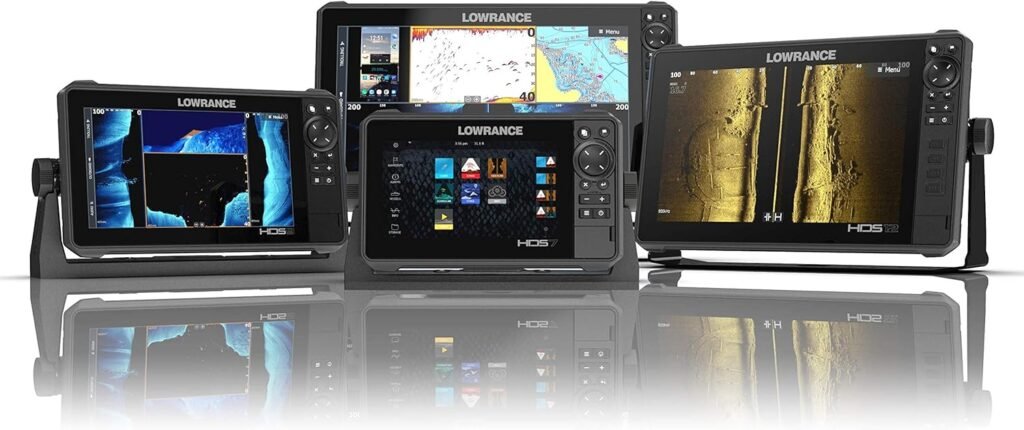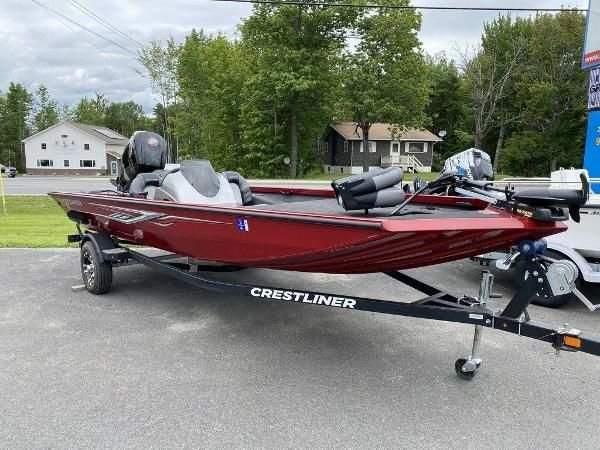Bass fishing electronics refer to a wide array of sophisticated tools and technologies designed to enhance the angler’s ability to locate, understand, and catch bass. These devices include fish finders, chart plotters, GPS navigation systems, and advanced sonar technologies.

The significance of these electronics lies in their ability to provide anglers with crucial information about the underwater environment, enabling them to make informed decisions and increase their chances of success on the water.
In recent years, bass fishing electronics have revolutionized the sport by offering anglers unprecedented access to real-time data about water depth, temperature fluctuations, underwater structures like rocks or submerged trees, fish activity patterns, and even precise GPS coordinates. These advancements have made bass fishing more efficient and opened up new possibilities for exploration and strategy development.
Evolution of Technology in Bass Fishing
The evolution of technology in bass fishing has been nothing short of remarkable. From humble beginnings with basic flasher-style fish finders in the 1970s to today’s highly advanced units equipped with color screens, GPS integration, side imaging capabilities, and internet connectivity—the progression has been truly astonishing. Early fish finders relied primarily on sonar technology that emitted sound waves into the water and displayed echoes on a screen as basic blips or arches representing fish or structures below.
However, modern advancements have transformed this technology into detailed imaging systems capable of providing high-definition images that accurately depict underwater topography and individual fish species. These developments have significantly improved an angler’s ability to locate productive areas while reducing the time spent searching for elusive bass.
Utilizing the Best Bass Fishing Electronics
Understanding and effectively utilizing bass fishing electronics is paramount for any serious angler seeking consistent success on the water. By harnessing the power of these tools, anglers can gain a comprehensive understanding of their fishing environment, enabling them to make intelligent decisions about lure selection, presentation techniques, and optimal fishing locations. Bass fishing is an intricate dance between anglers and fish, where every advantage counts.
Electronics give anglers a competitive edge by revealing valuable information about bass behavior, their preferred habitat, and feeding patterns. With this knowledge, anglers can adapt their strategies accordingly and maximize their chances of enticing that elusive trophy bass into biting.
In the next sections of this article, we will delve deeper into the various types of bass fishing electronics available today. We will explore sonar technologies such as traditional sonar systems, down imaging sonar systems, and side imaging sonar systems.
Furthermore, we will provide expert tips on choosing the right equipment to suit individual needs and budgets. So, let’s embark on this exciting journey into bass fishing electronics!
High-Level Overview of Bass Fishing Electronics
Sonar Technology
Sonar, an abbreviation for Sound Navigation Ranging, is a fundamental fish-finding technology. By emitting sound waves into the water and analyzing their echoes, anglers can gather valuable information about underwater structures, fish presence, and behavior.
The primary role of sonar in bass fishing is to enable fishermen to locate and track fish, ultimately increasing their chances of success on the water. There are three prominent types of sonar systems used in bass fishing: traditional sonar, down imaging sonar, and side imaging sonar.
Traditional sonar emits a single beam that scans the area beneath the boat. It visually represents the underwater world by presenting raw data in real-time.
On the other hand, down imaging sonar employs a narrower beam that delivers high-resolution images of the bottom structure directly below the boat. This technology allows anglers to visualize objects such as rocks, submerged vegetation, or even individual fish more clearly.
Side imaging sonar uses specialized transducers that emit beams horizontally from both sides of the boat. This wide coverage enables anglers to scan large areas and identify potential fishing hotspots at a glance.
Each type of sonar system has its own set of benefits and limitations. Traditional sonar is versatile and effectively provides an overall view of what lies beneath but lacks detailed imagery.
Down imaging excels at revealing intricate bottom details but sacrifices scanning range due to its narrow beam angle. Side imaging offers expansive coverage for locating structure-rich areas efficiently but may struggle with pinpointing exact fish locations due to limited depth perception within its wide beams.
GPS Navigation Systems
GPS (Global Positioning System) technology has revolutionized navigation in bass fishing by enabling anglers to accurately determine their position on the water. Integrated with fishing electronics, GPS systems provide indispensable functionalities for mapping, marking spots, and planning routes.
GPS in bass fishing allows anglers to create detailed maps of their fishing locations. By recording the boat’s movement and the corresponding depth readings, anglers can create precise contour maps that highlight changes in bottom structure and aid in identifying potential fish-holding areas.
Additionally, by marking spots of interest, such as productive fishing locations or hazards, anglers can easily return to these spots even after leaving the area. Advanced features of GPS navigation systems cater specifically to bass fishermen’s needs.
Waypoint management allows anglers to organize their marked spots efficiently and categorize them based on productive seasons or lure preferences. Moreover, route planning capability assists anglers in charting the most efficient paths between multiple waypoints or creating a circuit around a particular lake section.
Sonar technology plays a vital role in fish finding by providing critical information about underwater structures and fish presence. Traditional sonar offers versatility, while down imaging and side imaging sonars excel at providing high-resolution imagery and wide coverage, respectively.
On the other hand, GPS navigation systems have transformed bass fishing by facilitating accurate positioning on the water for mapping purposes and enabling efficient spot marking through waypoint management. These advanced technologies empower anglers with valuable insights that enhance their chances of success on every bass fishing expedition.
In-Depth Exploration of Sonar Technology in Bass Fishing Electronics
Traditional Sonar Systems
Traditional sonar systems have long been a staple in bass fishing electronics, providing anglers with valuable information about the underwater world. These systems emit sound waves from a transducer and then interpret the echoed signals, allowing anglers to visualize what lies beneath the surface.
The transducer plays a crucial role in sending out the sound waves and receiving their echoes. It converts these echoes into electrical signals on the fish finder’s screen.
The cone angle of traditional sonar determines the coverage area beneath the boat. A wider cone angle provides a broader view but with less detail, while a narrower cone angle offers more precise imaging but within a smaller area.
Additionally, frequency is essential in determining how well the sonar system can differentiate between objects and display them clearly on screen. Higher frequencies typically offer better resolution for distinguishing fine details.
Interpreting traditional sonar readings involves understanding various visual cues. Arches represent fish moving through the water column, with larger arches indicating larger fish.
Fish ID features on fish finders attempt to identify species based on their echo characteristics, although this feature can sometimes lead to misidentification or confusion. Furthermore, traditional sonar reveals underwater structures such as submerged trees or rocky formations through distinct echoes or shadows they cast.
Down Imaging Sonar Systems
Down imaging technology revolutionized bass fishing electronics by providing incredibly detailed imagery of underwater structures and objects below the boat’s position. These systems utilize specialized transducers that emit narrow beams in high frequencies to deliver exceptional clarity and resolution. When interpreting down imaging readings, anglers can observe highly detailed images of bottom structure identification, such as rocks, fallen trees, or vegetation beds.
These images’ improved resolution and clarity allow for better differentiation between various underwater features. Anglers can easily distinguish between weeds and hard or soft bottoms and spot individual fish lurking near structures.
The high-definition images produced by down imaging sonar systems provide valuable insights into the underwater environment, enabling anglers to identify potential fish-holding areas precisely. By recognizing the subtle nuances in bottom composition and structure, fishermen can make informed decisions about where to cast their lines to maximize their chances of success.
Side Imaging Sonar Systems
Side imaging technology has taken bass fishing electronics to new heights by offering a unique perspective on the underwater world. Unlike traditional sonar systems that primarily reveal what is directly beneath the boat, side imaging sonar systems extend the imaging capabilities to both the vessel’s left and right sides.
Understanding side imaging technology involves recognizing how transducer beams emit wide-angle sonar signals covering a large area on either side of the boat. These signals bounce off objects and structures before being received back by the transducer.
The detailed readings captured from these signals are then transformed into comprehensive side imaging displays. Interpreting side imaging readings allows anglers to locate fish-holding structures along both sides of their boat.
This technology’s highly detailed images enable fishermen to identify submerged brush piles, drop-offs, ledges, or rocky outcrops away from their immediate position. By analyzing these readings carefully and understanding how bass relate to different structures, anglers can strategize their approach effectively and increase their chances of hooking trophy-sized bass.
Expert Tips for Maximizing Bass Fishing Electronics Potential
Choosing the Right Equipment
Selecting the right equipment is paramount when maximizing your bass fishing experience with electronics. One crucial factor to consider is your budget constraints.
While top-of-the-line devices may offer cutting-edge features, they can also come with a hefty price tag. However, more affordable options that still deliver excellent performance are available thanks to technological advancements.
It’s essential to strike a balance between your budget and the features that are most important to you. In addition to budget considerations, several factors should be considered when choosing the right fish finder or chart plotter.
First and foremost is the display quality. Look for a device with a high-resolution screen that provides clear and detailed images.
This will allow you to interpret sonar readings and navigate maps effectively. The next factor to consider is the power and frequency of the transducer.
Higher frequencies can provide more detailed imaging but have a shorter range, while lower frequencies cover larger areas but sacrifice some image clarity. Assessing your typical fishing environment will help determine which frequency range suits your needs best.
Conclusion
Mastering bass fishing electronics can significantly enhance your angling success on the water. By understanding sonar technology like traditional, down imaging, and side imaging systems alongside GPS navigation systems, you can gain valuable insights into fish location and underwater structure mapping.
When selecting your electronics gear, it’s crucial to consider both your budget constraints and the specific features you require for an optimal fishing experience. Balancing these factors will ensure you choose equipment that meets your needs without breaking the bank.
Embrace this exciting era of bass fishing electronics as an opportunity for growth and exploration on every outing. With practice and ongoing learning about different technologies in this field, you’ll develop the ability to interpret sonar readings and navigate water bodies like a true expert.
So, equip yourself wisely, venture forth confidently, and prepare to reel in that trophy bass with precision and finesse. Happy fishing!






